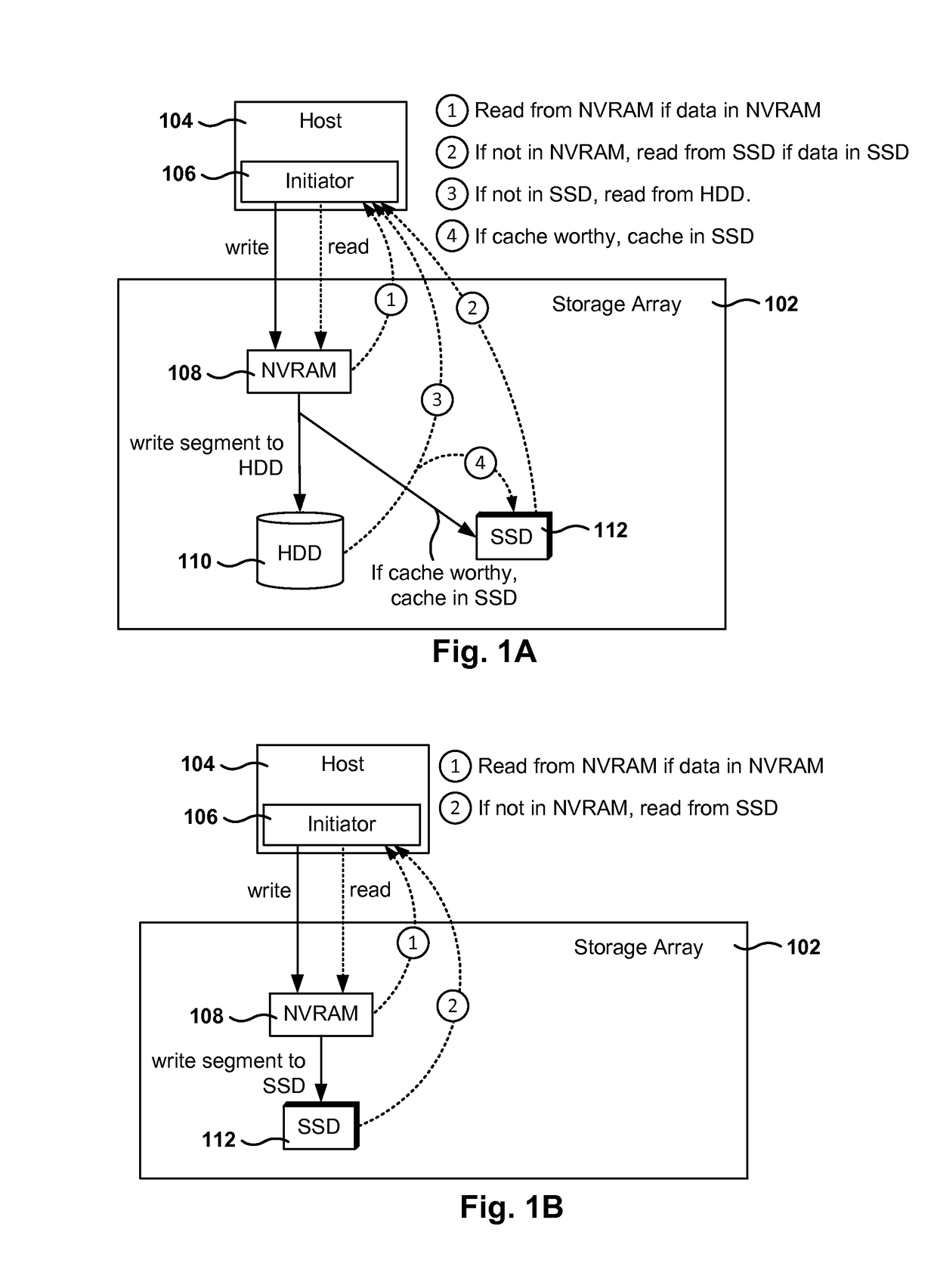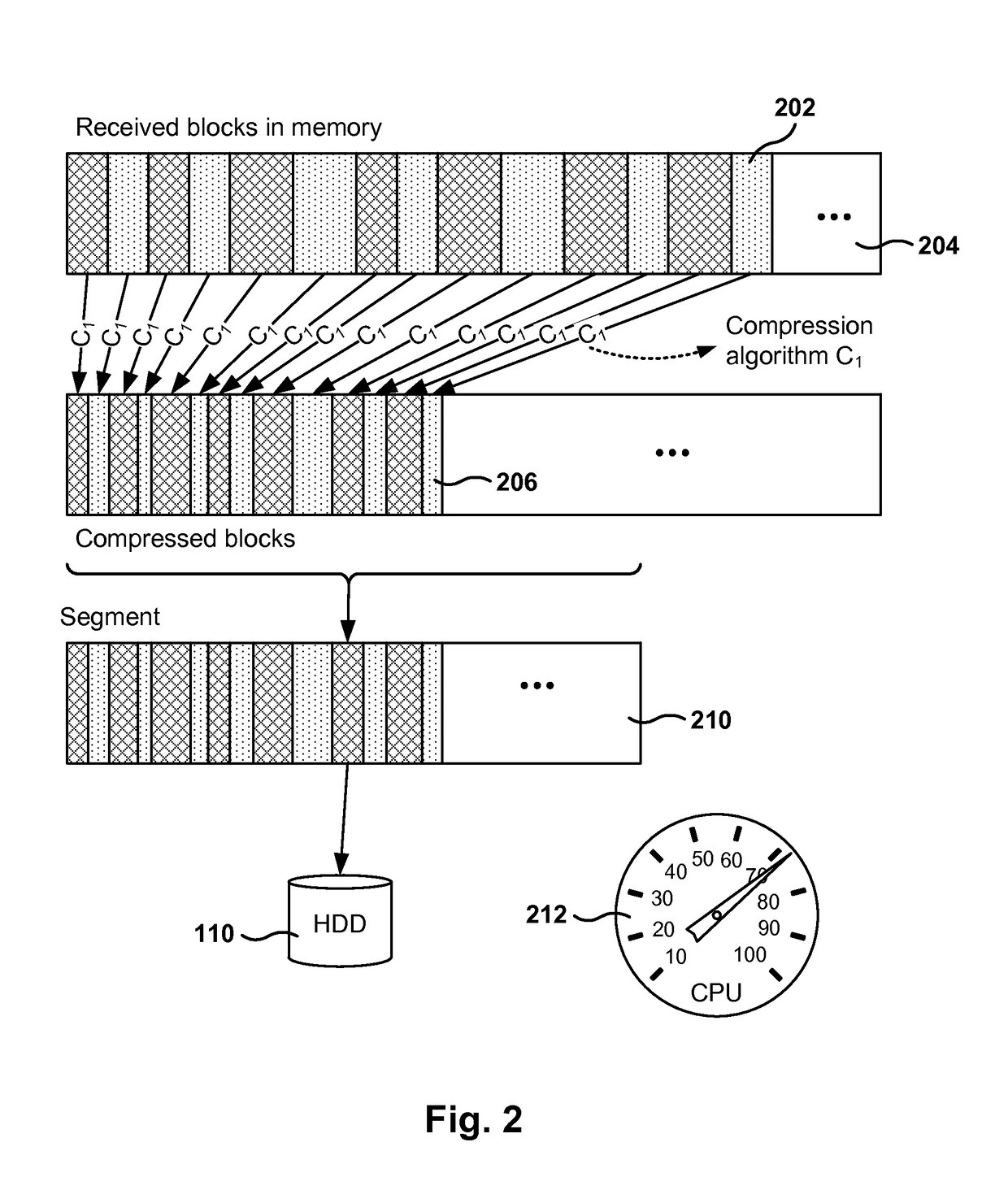Dynamic adaptive compression in network storage device
a network storage device and dynamic adaptive technology, applied in the direction of input/output to record carriers, instruments, computing, etc., can solve the problems of affecting the overall performance of the network storage device, consuming processor cycles for compressing data, and affecting input/output processing performance, etc., to achieve the effect of compressing
- Summary
- Abstract
- Description
- Claims
- Application Information
AI Technical Summary
Benefits of technology
Problems solved by technology
Method used
Image
Examples
Embodiment Construction
[0026]The processing of incoming blocks in a storage device includes compressing the incoming blocks before being sent to disk. A plurality of different compression algorithms is available, where each compression algorithm has a different speed and a different compression ratio. Sometimes, the system switches to a different compression algorithm in order to employ the compression algorithm that is fastest or that performs better compression, depending on the situation. For example, when CPU cycles are available, a better compression algorithm is selected (e.g., it compresses data better), although the algorithm may be slower.
[0027]Sometimes, oscillating cycles may repeat because, in the presence of free CPU cycles, a slower algorithm is selected, which causes the CPU to be overwhelmed; then the system switches back to the faster algorithm in order to release pressure on the system, and the switches may continue back and forth. This oscillating change may repeat over time, creating a...
PUM
 Login to View More
Login to View More Abstract
Description
Claims
Application Information
 Login to View More
Login to View More - R&D
- Intellectual Property
- Life Sciences
- Materials
- Tech Scout
- Unparalleled Data Quality
- Higher Quality Content
- 60% Fewer Hallucinations
Browse by: Latest US Patents, China's latest patents, Technical Efficacy Thesaurus, Application Domain, Technology Topic, Popular Technical Reports.
© 2025 PatSnap. All rights reserved.Legal|Privacy policy|Modern Slavery Act Transparency Statement|Sitemap|About US| Contact US: help@patsnap.com



